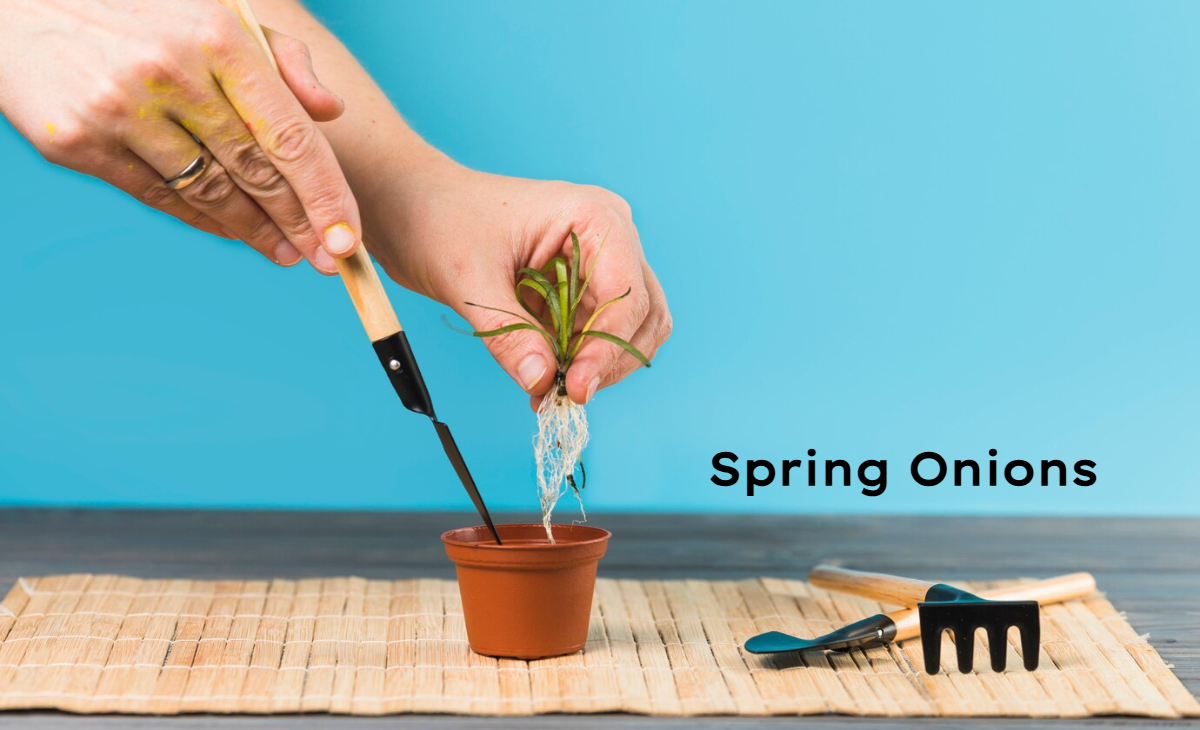Spring onions are a delightful addition to any home garden. With their crisp texture and mild flavor, they elevate dishes while being incredibly easy to grow. Imagine stepping into your garden and snipping fresh spring onions for your favorite salad or stir-fry. The best part? You don’t need a green thumb to cultivate these versatile veggies.
Whether you have limited space on a balcony or ample room in the backyard, growing spring onions can be an enjoyable experience for gardeners of all skill levels. From selecting the right variety to harvesting them at the perfect time, this guide will provide you with everything needed to successfully grow your own batch of spring onions. Let’s dig into some practical tips that will help you create an abundant harvest!
Growing Your Own Spring Onions: Tips for Home Gardeners
Growing your own spring onions is a rewarding venture that brings fresh flavor to your meals. Start by choosing the right variety for your climate and culinary preferences. Some popular options include white, yellow, and green types. Each has its unique taste and texture, so consider what will best suit your dishes.
When planting spring onions, you can use seeds or sets (small bulbs). If starting from seed, plant them in a well-draining soil mix about half an inch deep. Sets should be planted with their pointed ends facing up and spaced at least 4 inches apart for optimal growth.
Watering is crucial during germination; keep the soil consistently moist but not waterlogged. Spring onions thrive in full sun but can tolerate partial shade if necessary. Regularly check for pests like aphids or onion flies to ensure healthy growth.
As they grow, thin out weaker plants to give stronger ones room to flourish. With just a little care, you’ll soon enjoy homegrown spring onions ready for harvest! Their vibrant colors and delightful crunch make them perfect for various recipes throughout the season.
Varieties of Spring Onions
Spring onions, also known as green onions or scallions, come in various types that cater to different tastes and culinary applications. The most common variety is the classic green onion. This one boasts a mild flavor and tender texture, making it perfect for salads or garnishing dishes.
Another popular type is the Japanese bunching onion, which does not form bulbs but grows tall stems instead. Its sweet taste adds depth to stir-fries and soups. These are often favored in Asian cuisines for their unique flavor profile.
Then there’s the white spring onion, characterized by its larger bulb and slightly stronger taste compared to other varieties. This type works wonderfully when roasted or grilled, bringing out its natural sugars while mellowing its sharpness.
When exploring vegetables with complementary flavors, the Fennel Bulb often comes into play. Known for its crunchy texture and delicate anise-like taste, fennel bulb pairs exceptionally well with spring onions in both raw and cooked dishes. Together, they can create beautifully balanced flavor profiles, from bright and zesty salads to hearty roasted vegetable medleys.
Consider the red spring onion for a pop of color on your plate. With its vibrant hue and milder bite than traditional onions, it’s excellent raw in salads or as a colorful garnish on various dishes. Each variety brings something special to your garden and table.
Germinating Spring Onions
Germinating spring onions is a straightforward and rewarding process. Begin by selecting high-quality seeds from your favorite variety. Look for options that suit your climate, as some types thrive better in specific conditions.
Plant the seeds about half an inch deep in well-draining soil. Ensure you space them roughly two inches apart to allow for healthy growth. It’s essential to keep the soil consistently moist but not soggy; overwatering can lead to rot.
Ideally, germination occurs within 7-14 days under optimal conditions. Place your seed tray or garden bed in a sunny spot where they can soak up plenty of light. If you’re starting indoors, consider using grow lights if natural sunlight is limited.
Once seedlings emerge, thin them out as needed by snipping the weaker ones at soil level with scissors. This encourages stronger plants and ensures each spring onion has enough room to flourish without competition for nutrients and water.
Choosing and Preparing Spring Onions
Choosing the right spring onions is crucial for a successful harvest. Look for healthy bulbs with firm, unblemished skins. A vibrant green top indicates freshness and quality. Avoid any that show signs of wilting or decay, as these won’t thrive in your garden.
When preparing to plant, it’s important to consider the soil conditions. Spring onions prefer well-drained soil enriched with organic matter. Before planting, loosen the soil and mix in compost or aged manure to provide essential nutrients. This sets up an ideal growing environment.
Plant your spring onion bulbs about one inch deep and spaced around four inches apart. They can be grown directly from seed or as sets from a local nursery—both options yield delicious results! Just remember that seeds may take a little longer to germinate compared to starting with established sets.
Watering is key during their initial growth phase but avoid overwatering, which can lead to rot. As they grow taller, ensure they receive plenty of sunlight; at least six hours each day will help them develop robust flavors while enhancing their crisp texture when harvested later on.
Storing Spring Onions
Storing spring onions properly can extend their freshness and keep them flavorful for longer. First, you want to ensure they are clean before storage. Gently rinse off any dirt and pat them dry with a paper towel. Excess moisture can lead to spoilage, so this step is crucial.
For short-term storage, place your spring onions in the refrigerator. Wrap them loosely in a damp paper towel and then put them inside a plastic bag or container. This method helps maintain humidity while preventing excess moisture from accumulating.
If you plan on storing spring onions for an extended period, consider freezing them. Chop the bulbs and greens separately, spread them on a baking sheet to freeze individually, then transfer to airtight containers or freezer bags once solidified. This way, you’ll have quick access whenever needed.
Another option is growing your own green onion roots in water! Simply place the white ends of the bulbs into a glass of water with enough depth to cover half of each bulb’s base. With proper sunlight and regular water changes, you’ll have fresh green shoots right at your fingertips.
Spring Onions in Recipes
Spring onions are a versatile ingredient that can elevate numerous dishes. Their mild, fresh flavor complements a wide range of recipes, making them an essential addition to your culinary arsenal. You can use spring onions raw in salads or as garnishes for soups and tacos. A simple sprinkle adds color and crunch without overpowering other flavors.
For cooking, consider sautéing them with vegetables or adding them to stir-fries for a delicious aroma. They can also be grilled whole or chopped into omelets, providing an extra layer of taste. If you’re looking to create homemade dressings or dips, finely diced spring onions add brightness and zest.
Don’t hesitate to experiment! These onion greens work well in pasta dishes too—just toss some lightly sautéed slices with spaghetti for a quick weeknight meal. The possibilities are endless when you let your creativity shine through the kitchen.
Embrace the freshness of homegrown spring onions in every dish you prepare; they truly embody the essence of garden-to-table goodness. Enjoy experimenting with this delightful vegetable while savoring the satisfaction of using what you’ve cultivated yourself.







